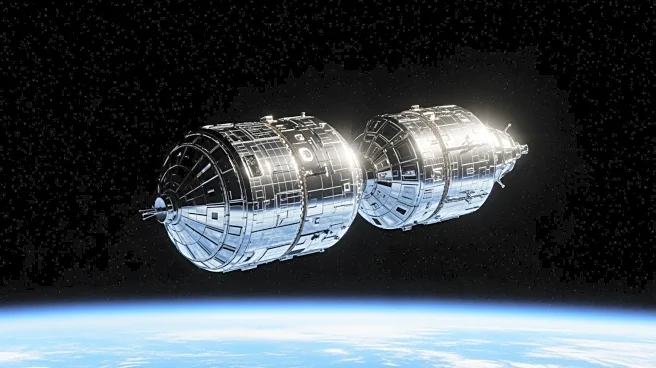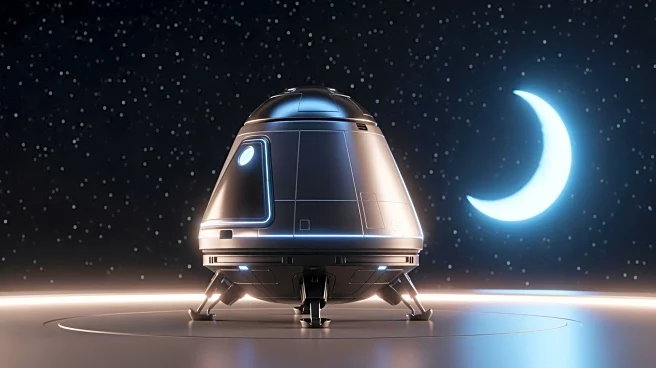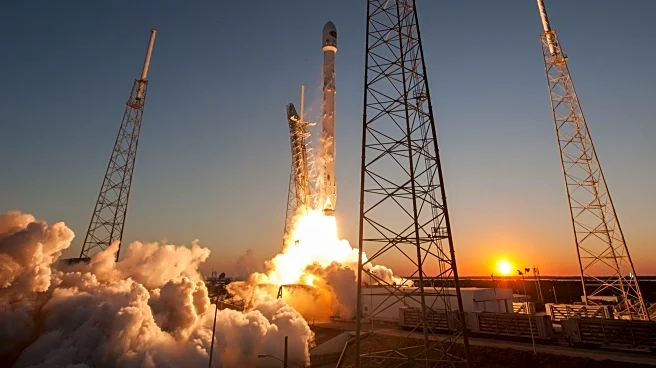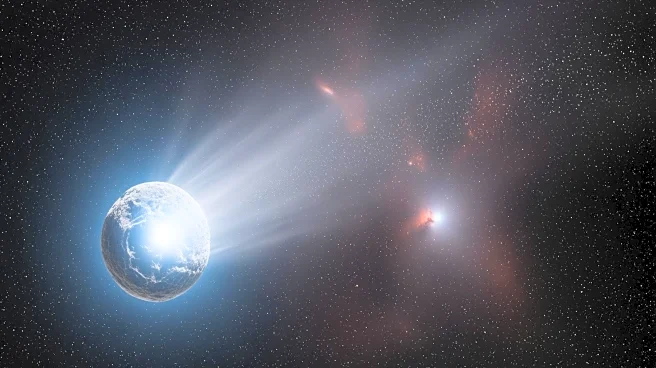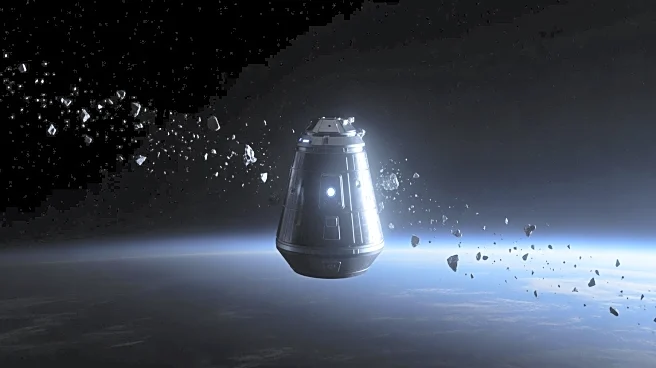What's Happening?
Two rovers from the German Aerospace Center (DLR) have conducted a simulation in Cologne, Germany, to assist future Artemis missions in locating water ice on the moon. The rovers, LRU1 and LRU2, utilized
cameras and lasers to map and analyze the simulated lunar surface. LRU1, resembling the fictional robot WALL-E, used panoramic cameras to detect minerals and ice, while LRU2 employed a robotic arm and laser spectroscopy to study rock samples. The mission demonstrated the effectiveness of these technologies in challenging conditions, such as mock lava caves, and revealed water signals through seismic vibrations. The rovers' success in finding water ice is promising for future lunar explorations, although no firm flight date has been set for their deployment.
Why It's Important?
The simulation is crucial for the Artemis program, which aims to return humans to the moon and establish a sustainable presence. Water is essential for astronauts' survival and can be used for rocket fuel, reducing the need to transport it from Earth. The ability to locate water ice on the moon could significantly lower mission costs and increase efficiency. The technology tested by DLR could save valuable astronaut time and resources, making lunar missions more feasible and sustainable. This development is a step forward in international collaboration for space exploration, with the European Space Agency's Argonaut mission potentially benefiting from these findings.
What's Next?
The next steps involve analyzing the data collected during the simulation to refine the technology further. Researchers will continue testing the rovers in various environments to ensure their reliability and effectiveness. The Polar Explorer campaign, led by Nicole Schmitz, aims to integrate these findings into future missions. The rovers may be selected for the Argonaut lander mission, supporting Artemis by providing navigation, energy, and telecommunications technology. Continued collaboration between international space agencies will be essential for advancing lunar exploration and achieving the goals of the Artemis program.





